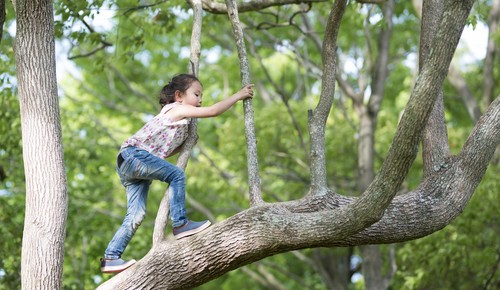
International children’s rights law, primarily the UN Convention on the Rights of the Child, which was adopted 30 years ago on 20 November 1989, dedicates much attention to facilitating the ability of children to grow up. The care for child development, as I argue in my new book The Child’s Right to Development, is embedded in a complex legal structure created by the Convention, which is the most ratified human rights treaty in history. I suggest interpreting Article 6(2) of the Convention as an article that protect the child’s unique legal right to development. In addition to this, five other Articles of the Convention (Articles 18(1), 23(3), 27(1), 29(1)(a) and 32(1)) refer to eight specific aspects of child development that require protection: physical development, mental development, moral development, social development, cultural development, spiritual development, development of the personality, and development of talent. No other human rights treaty provides a similar level of protection for human development. The significance of this right in the context of international children’s rights law is further demonstrated by the fact that in 2005, the UN Committee on the Rights of the Child defined Article 6 as one of the Convention’s four guiding principles, together with the well-established principle of the best interests of the chid, the right to non-discrimination, and the right of children to participate in decisions concerning their lives.
However, legal scholars and practitioners, as well as policymakers, have paid little attention to the right to development of children. This has resulted in inadequate protection for what seems to be the natural life trajectory of every baby, toddler and young child: becoming an adult.
This has resulted in inadequate protection for what seems to be the natural life trajectory of every baby, toddler and young child: becoming an adult.
In the book, I trace the genealogy of protecting child development in law, asking why and how law and legal scholarship have conceptualised the notions of childhood, child development and children’s rights from the 19th century until the adoption of the Convention on the Rights of the Child. I show how changing social and political attitudes towards children have affected the sort of protection we ascribe to their development and to cogent rights such as the right to education and the right to health. The book also analyses the entire work of the UN Committee on the Rights of the Child concerning child development and the right to development, looking at every General Comment and Concluding Observation that the Committee published between 1993 and 2016. This careful analysis shows that while the Committee emphasises time and again the need to protect child development and the right to development, and links almost every right in the Convention to those goals, it essentially says very little about the concrete and distinct meaning that this right has, and can have, for children.
I therefore argue that one of the biggest challenges for lawyers in dealing with child development is the lack of sufficient knowledge and understanding of what this term means. Paediatricians, social workers, neuroscientists, sociologists and psychologists will – unlike lawyers – have a solid disciplinary knowledge and awareness to what constitutes “good”, “healthy” or “normal” development; what the risk factors are; and why, for example, the first 1,000 days in a child’s life are crucial in determining the child’s future capacities and capabilities. The book therefore makes the case for a multidisciplinary approach to the utilisation and protection of the child’s right to development, while setting some key elements for how this right should be interpreted.
First and foremost, the right to development should account for the significance of the journey towards adulthood (the process of development), the adult that the child becomes (the artefact of development) while paying equal respect to the dignity of children and the importance of their lives in the present, during their childhood. The book therefore develops the hybrid conception of childhood, which brings these two dimensions together in a non-binary way. In a similar vein, children’s agency must be respected when the right to development is protected, and children should have the opportunity to participate and influence, and in some cases decide, on the course that their lives take. This book shows how the process of development might be rethought, and why that might be worth doing for the intended agents and beneficiaries of international children’s rights law: children.
Latest Comments
Have your say!